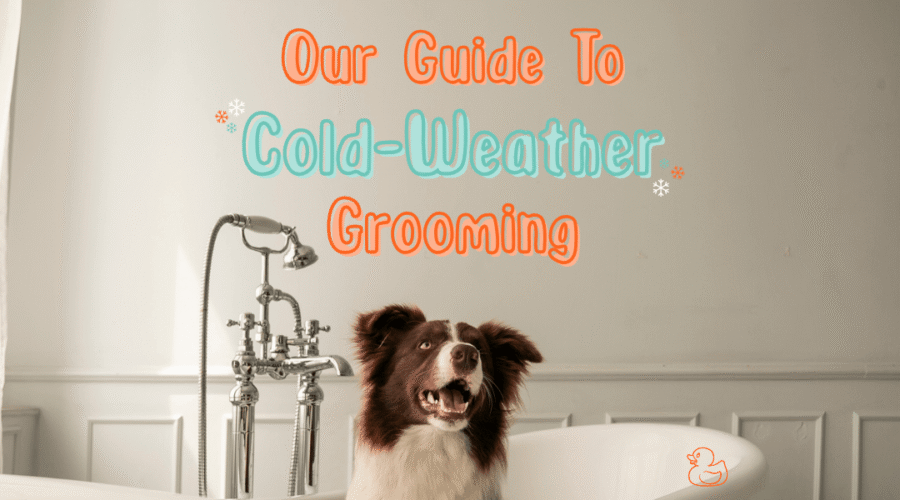A Guide to Cold-Weather Grooming
With our Guide to Cold-Weather Grooming, we’ve got your pets covered this crazy cold winter.
When winter rolls in, it’s easy to think your pet’s grooming routine can go into hibernation too. After all, isn’t it all that fluff keeping them warm? Not quite! While it’s true that pets need their coats to stay cosy, winter grooming is just as important, if not more so during the colder months.
Here’s everything you need to know about keeping your furry friend clean, comfortable, and healthy this winter.
Cold-Weather Grooming
Even though your pet might be spending more time snuggled up indoors, their grooming needs don’t disappear. In fact, regular brushing is essential to prevent knots and matting, especially for long-haired pets. Matter fur can actually trap moisture, dirt, and even cold air against the skin, making your pet colder not warmer.
Grooming helps distribute natural oils through their coat, supporting healthy skin and a better insulating layer of fur. Bonus? It also reduces shedding, which is great for your couch and your sanity.
Adjust the Bathing Routine – Don’t Skip It
You might not need to bathe your pet as often in winter, but that doesn’t mean no baths at all. Cold-weather grooming is still so so important. A dirty coat can quickly become a breeding ground for skin issues, especially if your pet gets muddy on walks or has allergies.
When you bathe them:
- Use warm (not hot) water.
- Dry them thoroughly. Damp fur in cold weather is a recipe for chills.
- Switch to a gentle, moisturising shampoo to help soothe dry, winter-prone skin.
Tip: Bathe during the warmest part of the day and keep the bathroom nice and toasty!
What About Trimming?
This is where it gets a bit tricky. You definitely don’t want to shave your pet in winter, but that doesn’t mean they should look like a woolly mammoth either.
- Long-haired pets still need trims to prevent mats and to keep their fur manageable.
- Short-hair pets benefit from regular brushing to boost circulation and maintain healthy skin.
- Paw pads need special attention! Trim the fur between the toes to prevent ice balls or slippery indoor moments on tiled floors.
A tidy coat means your pet’s natural insulation works as it should, and you avoid vet visits for skin problems later on.
Tailoring Cold-Weather Grooming to Your Pet
Every pet is unique, and cold-weather grooming should match their specific needs.
Dogs: Breeds like Huskies or Labs may shed more in winter and need frequent brushing. Poodles and similar breeds should still see a groomer regularly to prevent matting.
Cats: Most are self-cleaning pros, but long-haired felines appreciate a little help with grooming during the colder months.
Small Pets (rabbits, guinea pigs, rats): Never bathe them – they are incredibly prone to hyperthermia. Just ensure their bedding stays clean, dry, and warm.
Don’t Forget Skincare
Cold air and indoor heating can be terrible for sensitive paws and noses. Try adding a few extra steps to your winter routines:
- Use pet-safe moisturisers or paw balms to prevent cracked skin (coconut oil works great too)
- Wipe paws after walks to remove dirt and dry them with a towel.
- Keep an eye on dry or flaky skin and consult your vet or groomer if needed.
Skipping grooming in winter might seem like the easier choice, but a little care goes a long way. By brushing regularly, bathing smartly, and adjusting your routine to rh season, you’ll keep your pet warm, healthy, and oh-so-snuggle-worthy all winter long.
Do you have any cold-weather grooming tips? Share them with us on our socials:
Find groomers near you here


